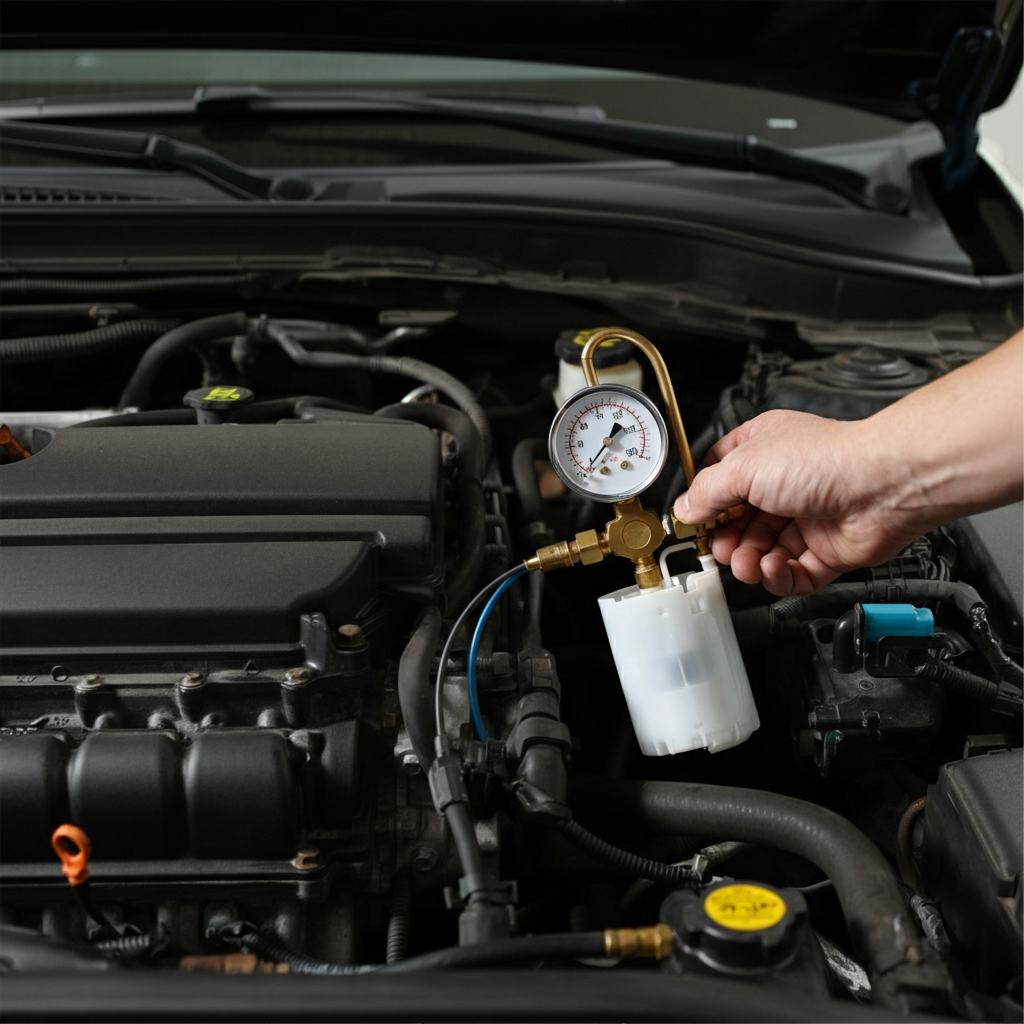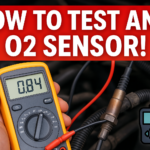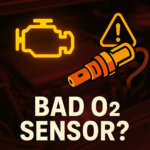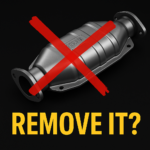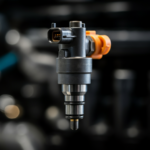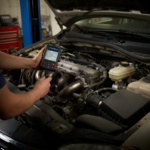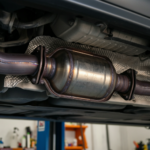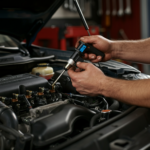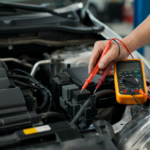Fuel pumps are the heart of your car’s fuel system, responsible for transferring gasoline from the tank to the engine. A malfunctioning fuel pump can cause serious issues, leading to power loss, poor performance, and even a car that refuses to start. Understanding the signs of a bad fuel pump is crucial for every car owner, DIY mechanic, and auto enthusiast. This comprehensive guide will take you through bad fuel pump symptoms, what causes a fuel pump to go bad, and how to diagnose and fix the issue.
What is a Fuel Pump and Why is It Important?
The fuel pump ensures gasoline flows from the gas tank to the engine efficiently. It plays an essential role in maintaining the correct fuel pressure so that your engine receives the right mixture of fuel and air. Whether mechanical or electric, a faulty fuel pump can jeopardize your car’s performance and reliability.
To learn more about how a fuel pump works, check out this detailed guide on How a Fuel Pump Works.
Symptoms of a Bad Fuel Pump
Knowing the common signs of a bad fuel pump can save you from being stranded and prevent costly repairs down the road. Here’s a look at the key fuel pump failure symptoms to watch out for:
1. Difficulty Starting Your Car
One of the earliest signs of a fuel pump going bad is trouble starting your car. If your engine cranks but doesn’t start, the fuel pump may not be delivering enough fuel to the engine for proper combustion.
2. Power Loss During Acceleration or Uphill Driving
Does your car seem sluggish during acceleration or lack power when climbing hills? This could be a fuel system issue caused by a bad fuel pump.
3. Engine Stalling
Frequent and sudden stalling, especially when driving at higher speeds, can point to a fuel pump problem. This may indicate inconsistent fuel delivery.
4. Whining or Humming Noises from the Gas Tank
A bad fuel pump sound often resembles a high-pitched whining or humming from the gas tank area. This noise could signal that your fuel pump is struggling to function properly.
5. Decreased Fuel Efficiency
Reduced fuel efficiency or needing to fill up more often than usual could indicate a clogged fuel filter, faulty injectors, or low-pressure fuel pump symptoms.
6. Engine Misfires or Surges
If your engine misfires or surges, inconsistent fuel delivery by a failing fuel pump may be the culprit.
7. Check Engine Light is On
A faulty fuel pump can trigger the check engine light. Use an OBD-II scanner to diagnose the issue or consult a professional mechanic.
For a detailed guide on diagnosing engine misfires, read our article on How Can You Tell if Your Car is Misfiring? A Complete Guide.
What Causes a Fuel Pump to Go Bad?
Several factors can lead to fuel pump problems, including:
- Bad fuel or debris in the gas tank clogging the pump
- Regular wear and tear, reducing efficiency
- Running the car on low fuel frequently, leading to overheating
- Faulty components like the fuel pump relay or fuel pressure regulator
Additionally, some fuel pumps simply reach the end of their lifespan. On average, they last around 100,000 miles, but this varies based on the make and model of your vehicle.
How to Diagnose a Faulty Fuel Pump
If you’re wondering, “How do you know when your fuel pump is bad?”, diagnosing the issue can be straightforward if you follow these steps.
1. Use a Fuel Pressure Gauge
Connect a fuel pressure gauge to your vehicle’s fuel lines to measure the pressure. Low pressure often indicates the pump isn’t functioning correctly.
2. Listen for the Fuel Pump Sound
Turn your ignition key to the “on” position (without starting the engine). Listen for a faint humming sound coming from the gas tank. If you don’t hear anything, it might mean your pump isn’t working at all.
3. Test the Fuel Pump Relay
Faulty fuel pump relays can cut off power to the pump. Test it by swapping it with a relay of the same type and see if the pump responds.
4. Inspect the Fuel System
Check for clogged filters, damaged fuel lines, or worn-out fuel injectors that might mimic fuel pump issues.
5. Scan for Diagnostic Trouble Codes
Use an OBD-II scanner to check for any error codes related to fuel pump problems or the fuel system.
If you’re still unsure how to tell if your fuel pump is going out, it’s time to consult a professional mechanic for further investigation.
Preventing Fuel Pump Problems
Follow these tips to extend the lifespan of your fuel pump and avoid potential issues.
- Avoid Running on Empty
Keeping your gas tank at least a quarter full ensures the pump stays cool and prevents debris from being sucked into the system.
- Change Your Fuel Filter Regularly
A clogged fuel filter puts extra strain on the pump. Follow your manufacturer’s guidelines for filter replacement.
- Use High-Quality Fuel
Low-grade gas can clog fuel lines and damage the pump. Stick to reputable gas stations.
- Stay on Top of Maintenance
Inspect your fuel system, including filters and fuel injectors, during regular service intervals for signs of wear.
When to Replace a Fuel Pump
If you’re experiencing multiple fuel pump issues symptoms, it may be time for a fuel pump replacement. Replacing a pump can range from $400 to $800 depending on your car’s make and model.
To see if your fuel pump is faulty, or if you spot any bad fuel pump symptoms, act quickly before the problem escalates.
Final Thoughts on Fuel Pump Problems
A bad fuel pump can significantly impact your car’s performance and safety. By understanding the fuel pump symptoms to watch for, diagnosing issues as they arise, and maintaining your vehicle’s fuel system, you can save time and money while ensuring your car stays in top condition.
Remember, your fuel pump is vital for ensuring your vehicle runs smoothly. If you suspect any fuel pump issues, don’t hesitate to act. With proper knowledge, tools, and maintenance, you can prevent major disruptions and keep your car on the road.
